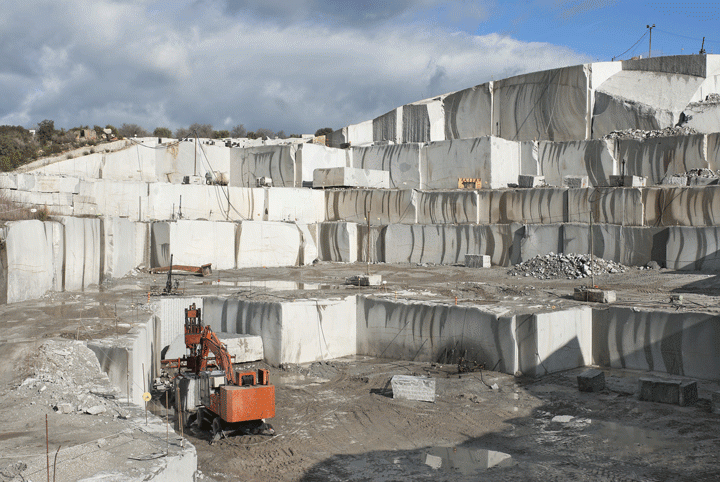Journeying Via Granite Quarries in South Africa: A Visual Odyssey
Journeying Via Granite Quarries in South Africa: A Visual Odyssey
Blog Article
Revealing the Mysteries of Granite Quarrying: Where Strength and Beauty Meet
The world of granite quarrying is a realm where the raw toughness of nature assembles with human artistry to create structures that stand the test of time with an air of sophistication. From the midsts of quarries to the careful polishing in workshops, the procedure of changing granite into building marvels is a complex dancing of custom and advancement. As we peer right into the depths of this ancient craft, we begin to reveal the concealed ins and outs that shape the very significance of our constructed setting.
The Origins of Granite Quarrying
In the record of building history, the origins of granite quarrying are shrouded in a tapestry of ancient craftsmanship and geological marvels. Dating back to old Egypt and Mesopotamia, the removal of granite from quarries marked the beginning of a trip that would eventually bring about the development of a few of the globe's most iconic frameworks.
Granite quarrying's origins can be mapped to the skilled artisans who identified the stone's longevity and aesthetic charm. Through a combination of primitive tools and large resolution, these early quarry workers discovered granite blocks that would end up being the building blocks of human beings.
As people progressed, so did the techniques of quarrying granite. The Romans, renowned for their engineering prowess, developed sophisticated approaches for extracting granite to create monoliths, temples, and roadways that stood the examination of time.
The heritage of these ancient quarrying practices remains to shape modern style, with granite remaining an icon of strength and sophistication in construction tasks around the globe. (granite quarries in south africa)
Devices of the Quarrying Profession
The development of granite quarrying methods from ancient civilizations to contemporary times highlights the critical role played by the tools of the quarrying trade in forming the market's methods. In old times, quarrying tools were simple, usually including knives, hammers, and wedges made from materials like bronze or iron. These tools required considerable manpower and time to remove granite obstructs from quarries.

Furthermore, the intro of pneumatically-driven tools and high-powered equipment has actually substantially decreased the physical labor required in quarrying operations, improving worker safety and security and performance. As the quarrying market proceeds to introduce, the tools of the trade stay at the forefront of driving development and forming the future of granite removal.
Extracting Blocks of Granite
Using accuracy equipment and progressed strategies, the removal of granite obstructs from quarries has come to be an innovative process in the contemporary quarrying sector. The preliminary step entails determining the place and size of the granite down payment to identify the most effective removal technique. When an appropriate website is selected, the extraction procedure begins with the drilling of openings for the positioning of dynamites. Controlled blowing up techniques are after that used to disintegrate the granite right into manageable sections.

Polishing and Completing Strategies
To accomplish a flawless surface on granite blocks, proficient artisans utilize a collection of careful polishing and completing techniques. After the preliminary extraction and forming processes, the granite obstructs undergo a complete polishing phase to enhance their all-natural charm and sturdiness. One typical approach used in brightening granite is diamond abrasion, where commercial diamonds are made use of to grind and polish the rock to a smooth coating. This procedure not only develops a check my site lustrous surface area however likewise makes certain harmony in color and texture throughout the granite block.
In enhancement to sprucing up, finishing methods are used to more refine the granite's appearance. These techniques may consist of flaming, sharpening, or cleaning, each offering distinct structures and surfaces to match different visual choices. Flaming, as an example, includes revealing the granite surface area to high temperature levels to create a rough, distinctive coating, go to this site ideal for outside applications where slip-resistance is essential. Refining, on the other hand, supplies a matte coating that is smooth to the touch, perfect for indoor countertops and floor covering. By very carefully selecting and using these polishing and completing strategies, craftsmens can transform raw granite obstructs right into exquisite items that display both toughness and style.

Environmental Influence and Sustainability
With the growing focus on environmental consciousness in the industry, granite quarrying techniques are increasingly scrutinized for their influence on all-natural resources and long-term sustainability. In addition, the transport of granite from quarries to processing centers generates carbon exhausts, even more contributing to environmental destruction.
To minimize these influences and guarantee sustainability in granite quarrying, industry stakeholders are embracing numerous procedures. Executing innovative innovations to reduce power consumption and water usage, recovering quarried land for eco-friendly reconstruction, and promoting accountable sourcing practices are some strategies being used. Certifications such as the Forest Stewardship Council (FSC) and the Management in Energy and Environmental Layout (LEED) aid consumers recognize eco friendly granite items.
Verdict
In verdict, granite quarrying is a process that needs specialized devices and techniques to essence blocks of granite and polish them to a high level of coating. While the environmental impact of quarrying can be considerable, initiatives are being made to boost sustainability techniques in the sector. In general, granite quarrying is a delicate balance between utilizing the toughness and elegance of this all-natural rock while reducing its influence on the environment.
Report this page